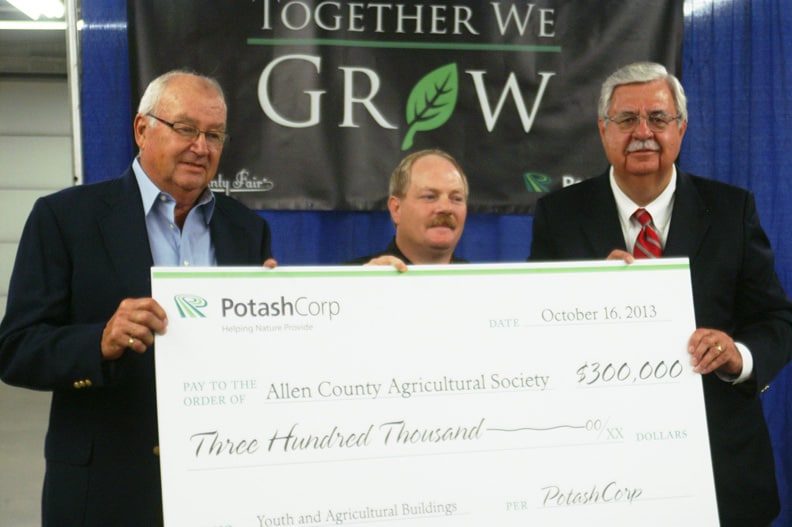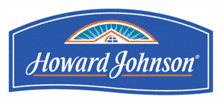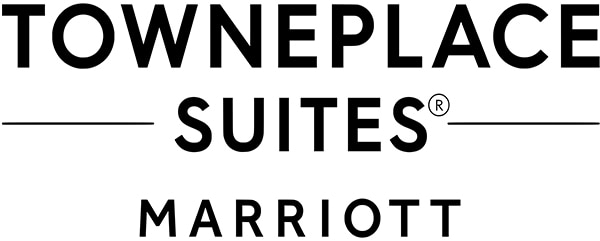About the Fairgrounds
Home » About the Fairgrounds
The Allen County Fairgrounds have an extensive history within the Lima and Allen County community.
When you take a look back over the history of the Allen County Fair, it’s hard to believe that today’s single largest countywide event arose out of a small meeting held more than 160 years ago. On January 11, 1851, a very important meeting was held in Lima, Ohio. The purpose of this meeting was to establish an Agricultural Society whose main directive would be to organize an annual county fair.
The first fair in Allen County was held in the Village of Lima on October 21, 1851. As was typical of fairs in that day, no attendance counts were maintained. However, it was reported that “a vast throng” assembled on the Faurot Farm at the southwest edge of Lima. After that initial one-day event, a two-day fair was held annually in October at the same site through 1855. After a five-year absence, the Allen County Agricultural Society was reorganized in 1860, due in large part to the insistence of a group of citizens aided by the local newspaper’s editorials chiding Allen County’s farmers for an absence of a county fair. Two-day fairs were again held annually at the Faurot Farm site through 1866. Beginning in 1867, the Allen County Fair was held on the Roberts Farm, east of Lima, at what would become the Lima Driving Park, and eventually the present site of Lima Memorial Hospital. From 1867 through 1881 the 30-acre site was rented from Josiah B. Roberts, until September 3, 1881, when the 30-acre site was purchased by the Allen County Agricultural Society.

During the period of 1897 through 1902, the Fair experienced five straight years of rain, resulting in devastating losses. Records show that at almost every meeting the principal subject under discussion was how to raise the necessary funds to carry on the fair. Repeated county levies failed, resulting in the sale of the Society property to the Lima Driving Park in 1903. The sale included a stipulation that the Allen County Agricultural Society be granted a twenty-year lease at an annual rent of $500 for the purpose of holding the county Fair.
The half mile track at the driving park was considered among the best in the United States hosting harness, automobile, and motorcycle races. From the early 1890’s until the last fair held there in 1921, the most celebrated harness horses of the nation appeared in competition at the Lima Track. Dan Patch, the legendary harness horse, appeared in an exhibition at the Allen County Fair in 1903 setting a new track record of 2:04. The famous pacer arrived in Lima in his own private railroad car.
Records show that the early fairs did not experience a large attendance. The 1869 records show that the fair secretary was authorized to produce 200 tickets for fifteen cents each for children under 15 years of age and 500 tickets at 25 cents each for adults. The Society membership was 81 members at $1 each.
When the lease at the driving park ran out, the fair was moved to the city of Delphos in the northwest corner of the county. For 27 years, from 1922 until 1948, the Allen County Fair was held as a street fair in the City of Delphos. It was during this time that the Junior Fair was organized, beginning in 1937. After WWII as the number of Junior Fair and other entries rose, the fair outgrew its home on the streets of Delphos. Residents and merchants alike objected to odors and waste products resulting from the expanding livestock numbers housed in tents on the street. The City of Delphos passed a referendum that the 1948 Allen County Fair would be the last one allowed on city streets. The Allen County Agricultural Society’s constitution was amended at this time to increase the Board of Directors from 11 to 18 directors, which is the size of the present board. The newly enlarged Board of Directors voted to move the fair, all society equipment (consisting of a dance pavilion, some chicken coops and some small tents, and its bank account containing $98.95) to Lima on a site east of town known as the Showgrounds. The 1949 Allen County Fair opened with 80,000 square feet under canvas and 35 acres of grounds bursting at the seams with exhibits and fair goers. It was in 1949 that the Junior Fair Board was first organized to oversee the expanding Junior Fair youth entries.
After only one year, the Showgrounds was determined to be too small. And in 1950, 80 acres were purchased by the county commissioners one mile east of town. The site, which through various transactions has become 125 acres, continues to be the home of the present Allen County Fair. The 1950 fair was held at the new site and christened “A Tent City” as the only building was a Quonset hut moved onto the property and used as the fair office. The 80 acres was fenced, light poles installed, city water and two fire hydrants brought to the grounds, a set of scales installed, and 1,100 tons of gravel hauled. In 1951 the first barn was built, starting an aggressive building campaign that continues to this day.
When the 80 acre fairgrounds was purchased in 1950, 5 acres was leased to the Lima Athletic Club and a ballpark was constructed which seated 2,750 spectators. The team was nicknamed the Lima Phillies and only played at the fairgrounds for part of the 1950 season and the 1951 season. By 1952, the Phillies’ league had folded, blamed largely on the rise of television. The ballpark was used for fair entertainment until 1958 when the 2,000 seat grandstand was built. The present racetrack was built in 1952, modeled after the track in Delaware, Ohio. With the construction of the new track, harness racing resumed at the fair in 1953. Buildings were added to the grounds in quick succession including a Beef Barn (1951), Youth Building (1952), Merchants Building (1953), two Swine Barns (one of which was originally used for sheep)(1953), Agriculture/Fine Arts Building (1954), Pony Barn (1955), Dairy Barn (1956), Rabbit/Poultry Barn (1957), Grandstand (1958), Sheep Barn (1963).
A three phase renovation of the fairgrounds was begun in 1976 following the donation of 30 acres to the west side of the fairgrounds by Jack Roschman in 1973. The first phase included the construction of a pond, roadways, and new entrances from St. Rt. 117. The second phase included the construction of a second Youth Building and a complete redesign of the midway in 1978. The midway project included the implementation of a paved ‘boulevard’ style layout along with decorative street lights and landscape planters. The third and final phase of the renovation involved a new front entrance, paving of parking areas, restrooms, and burying of electrical lines. The cost of this three-phase renovation reached nearly $400,000, not including a great amount of volunteer labor (common to nearly all fairground projects). 1983 saw the beginning of the first phase of a new Horse Barn project, which was completed in 1990.
The modern-day fairs were managed out of an office underneath the grandstand until the summer of 1993 when a new Administration Building was completed. The dramatic growth of the fair during the previous decade resulted in a need for more staff and more work space. The Administration Building, with visitor service windows on all sides, provides a year round home for the full-time staff and a central headquarters during the fair.
The dramatic growth of the fair in the 80’s and 90’s can be attributed to many things. One factor, which truly influenced the growth of the fair, was the addition of nationally known performers to the entertainment lineup. Stars including Kenny Rogers, Alabama, Barbara Mandrell, Reba McEntire, Bill Cosby, Def Leppard, The Oak Ridge Boys, Alan Jackson, Ted Nugent, Brooks & Dunn, and Vince Gill are just a few of those who have performed at the Allen County Fair.
Other factors influencing the growth of the fair were the constant improvements being made to the grounds. The Allen County Fairgrounds boasts one of the finest fair facilities in the state. Many a visitor has stopped to remark on the clean well-kept grounds and top notch facilities. The quality of the facilities aids the full-time staff in managing a year-round event schedule. Through off-season rental of the grounds and buildings, the fairgrounds hosts the Ohio National Championship Motorcycle races and the 4-Wheel Off-Road Jamboree in addition to a variety of craft shows, swap meets, gun shows, flea markets, concerts and horse shows.
The Allen County Fair serves to bond local communities together, as no other event draws from as many areas of the county or involves the cooperation of so many different people. An average fair is comprised of more than 350 Senior Fair exhibitors, 60 Agriculture Education students, 90 Girl Scout exhibitors, more than 1200 Junior Fair exhibitors, and 200 Concessionaires. The Allen County Junior Fair Livestock Auction is one of the largest in the state with more than 400 Junior Fair Livestock Sale participants and more than 700 buyers involved. Today the Allen County Fair is one of the top fairs in the state, with attendance figures of well over 200,000 visitors annually.
Fair Foundation
Potash Company of Lima Ohio provided a gift of $300,000 to the Allen County Agricultural Society, managers of the Allen County Fair. In making the gift, Potash General Manager Todd Sutton said Potash is committed to improving our communities and increasing long term food production. The Allen County Fairgrounds is a place that contributes to both those goals. We believe our $300,000 commitment will make a difference today and help prepare the fairgrounds to remain an important part of our community for years to come.
The Allen County Fair Board would like to thank Potash and express how grateful they are for this generous gift. This gift will strengthen the appeal of the Fairgrounds as a leading event center of our region and further expand its economic contribution to the community.






